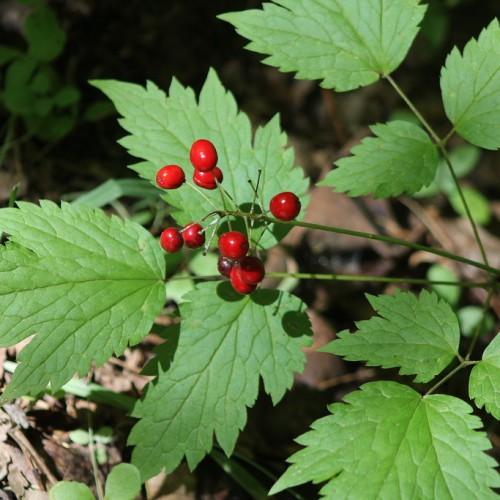
Red Baneberry
Actaea rubra
Also Known As - SnakeberryWatering:
Frequent
Hardiness Zone:
Flowers:
Flowers
Sun:
Sun, Partial Shade
Soil:
Clay, Sand
Leaf:
Yes
Growth Rate:
Low
Drought Tolerant:
Yes
Salt Tolerant:
Yes
Care Level:
Medium
watering
Sweetflag (Acorus americanus) should be watered regularly during the growing season so the soil remains lightly moist. Water the plant deeply, but avoid oversaturating it. Allow the top 1-2 inches of soil to dry out between waterings. During the summer, water Sweetflag about 2-3 times per week. In the cooler autumn months, reduce watering to once every 8-10 days. In the winter months, Sweetflag does not need to be watered, as dormancy sets in.
sunlight
Sweetflag (Acorus americanus) is a semi-aquatic plant species native to wetlands of North America. This species thrives best in moist to wet soils and requires lots of sunlight to flourish. For optimal growth, Sweetflag should receive 6 to 8 hours of direct sunlight per day. Morning sun is best as the plant can become scorched and suffer in afternoon heat and direct sunlight. Sweetflag should be planted in an area of the garden that receives full sun, without interruption from trees or tall structures.
pruning
Sweetflag (Acorus americanus) is a perennial grass-like plant maianly found in wetlands. Pruning should be done in late winter or early spring each year. Pruning should be done to remove any dead or damaged foliage and encourage healthy growth. Removing the oldest canes and thinning out overgrown plants will help maintain a natural, well-shaped plant. Cut out any defective, broken or dead foliage with sharp pruning shears, making sure to clean the blades between cuts if needed. Keep your pruners sterilized to prevent the spread of disease from 1 plant to another. Pruning should be done with care to avoid damaging the crown and root system. Sweetflag responds well to pruning by developing healthy, lush new foliage.
